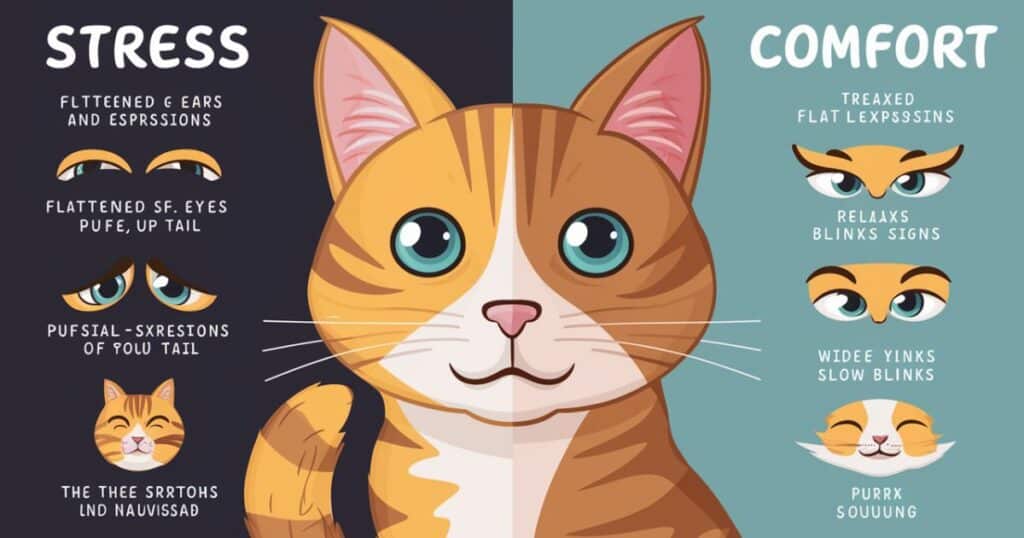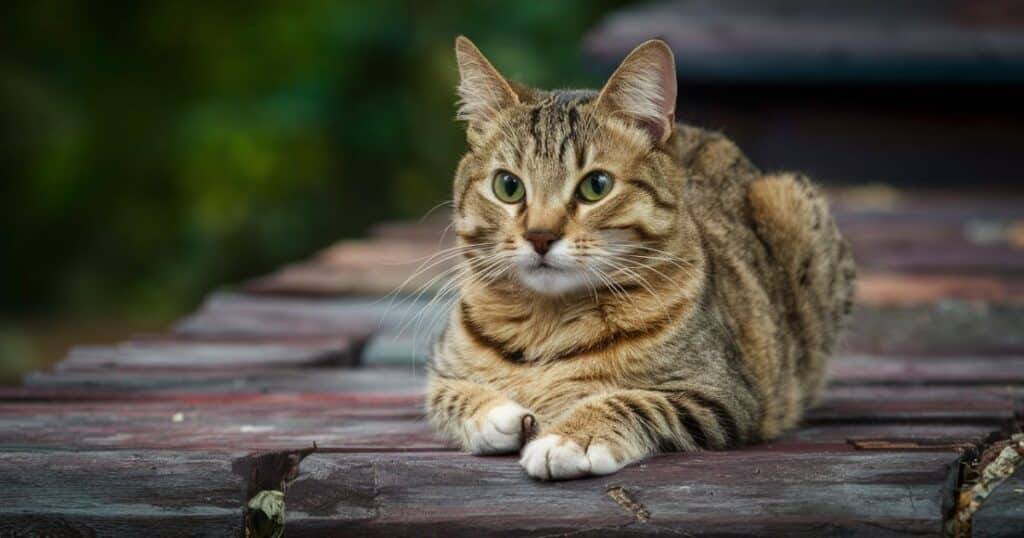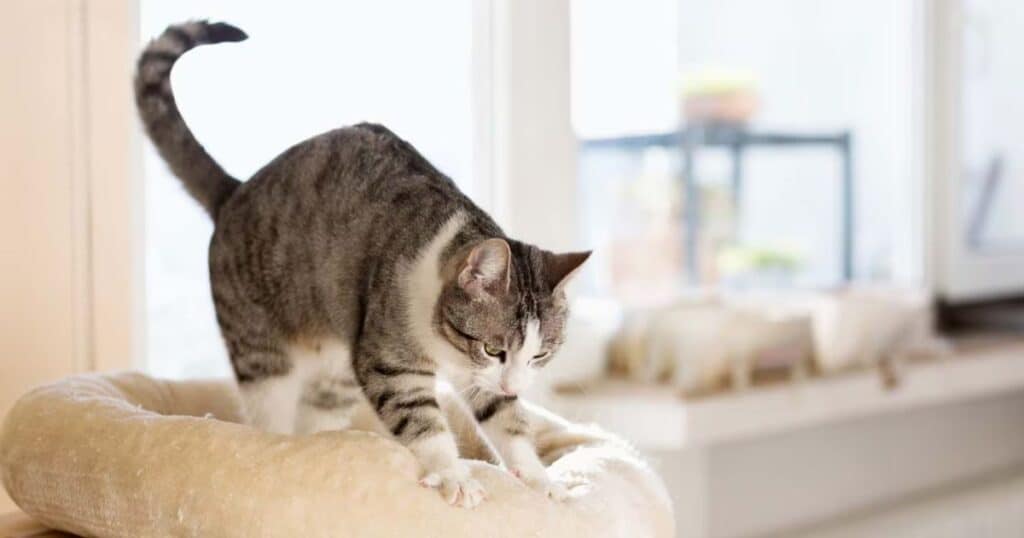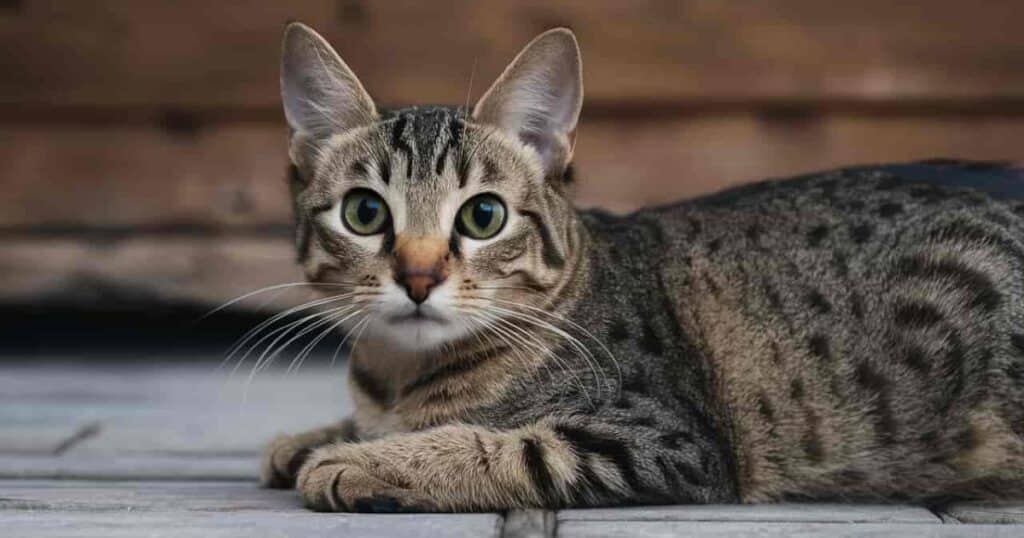Bringing a new feline companion into your home is an exciting journey, but it’s essential to understand the signs that your cat is adjusting well to their unfamiliar surroundings. From hiding and lack of appetite to exploring, playing, and seeking affection, a cat’s behavior can reveal a lot about their emotional state and comfort level. By creating a safe, welcoming environment, establishing consistent routines, and respecting your cat’s need for space and security, you can help them gradually transition from a stressed, cautious state to a relaxed, loving member of your family.
In this comprehensive guide, we’ll explore the unmistakable signs that your new cat is adjusting, providing you with the knowledge and tips to foster a strong, lasting bond with your furry friend.
Understanding New Cat Behavior in Their Adjustment Journey
When a cat first arrives in a new home, their behavior may seem puzzling or concerning at first. It’s essential to remember that this is a natural reaction to the upheaval in their environment. Cats thrive on routine, predictability, and familiarity, and the introduction of new sights, smells, and sounds can be overwhelming.
During this transition period, it’s crucial to approach your new feline friend with patience and empathy. Every cat will adjust at their own pace, and some may take longer than others to feel truly at ease. By understanding the adjustment process from your cat’s perspective, you can better recognize the positive indicators that they’re gradually settling in.
MORE POST: Unveiling The Enigmatic Blue Smoke Maine Coon Cat: A Complete Guide
Key Takeways
There are the following key takeaways:
- Be patient: can take 2-4 weeks or even months for a cat to fully adjust to a new home and owner. Every cat progresses at their own pace.
- Provide a safe space: Setting up a dedicated “safe room” with all the essentials like litter box, food, water, bedding, and toys can help ease your new cat’s transition.
- Observe body language: A relaxed cat will display signs like a soft blinking gaze, loosely wrapped tail, kneading, rolling on their back, purring, and head butting. These indicate they are feeling comfortable.
- Routine is crucial: Establishing consistent routines for feeding, playtime, litter box habits, and your presence can greatly reduce stress and reinforce positive associations.
- Respect boundaries: Allow your cat to initiate contact and approach them slowly for petting/affection. Forcing interactions can undo progress.
- Positive introductions – When introducing cats, look for signs like sniffing noses, gradual relaxation, grooming each other, and sharing resources peacefully. Aggression indicates dislike.
- Bonded pairs: Cats who groom, sleep, play together and seem distressed when separated are likely a bonded pair who should stay together.
- Celebrate milestones: Every positive behavior like exploring, playing, eating well, and seeking affection is a sign of adjustment to celebrate.
The key is providing a secure environment, sticking to routines, reading cat body language, and allowing your new feline friend to set the pace for adjusting.
Recognizing Stress Indicators vs. Comfort Signs in Cats

Identifying a Stressed Cat’s Characteristics
When a cat first enters a new environment, they may exhibit a range of behaviors indicative of stress or anxiety. These can include:
- Hiding: Your new cat may seek out secluded spots to hide, such as under furniture, in closets, or behind appliances.
- Lack of appetite: A stressed cat may show little to no interest in food or water, even if their favorite treats are offered.
- Excessive grooming: Compulsive over-grooming can be a sign of anxiety and an attempt to self-soothe.
- Vocalization: Meowing, yowling, or hissing may indicate your cat’s distress or discomfort in their new environment.
- Aggression: In extreme cases, a stressed cat may exhibit defensive behaviors like swatting, biting, or even attacking if they feel threatened.
It’s essential to be patient and give your new cat time and space to decompress. Forcing interactions or trying to coax them out of their hiding spot can prolong their stress and make the adjustment process more challenging.
Common Stress Behaviors on the First Day
On the first day or two in their new home, it’s not unusual for a cat to display the following behaviors:
- Hiding: Your cat may seek out a secluded, quiet spot to hide, such as under a bed, behind furniture, or in a closet.
- Lack of appetite: They may show little to no interest in food or water, even if their favorite treats are offered.
- Alertness: Your new cat may seem overly alert and jumpy at every sound or movement, as they’re on high alert in an unfamiliar environment.
These behaviors are perfectly normal and expected as your cat adjusts to their new surroundings. With time, patience, and a safe, welcoming environment, they’ll gradually start to feel more comfortable and secure.
Contrasting Signs of a Relaxed Cat
As your new feline companion begins to adjust to their new home, you’ll start to notice signs of relaxation and comfort. These can include:
- Exploratory behavior: Your cat may start venturing out of their hiding spot to investigate their new surroundings, sniffing and rubbing against surfaces to leave their scent.
- Playing with toys: A cat who’s feeling more at ease may start engaging with toys or playful behavior, which is an essential part of their physical and mental well-being.
- Using the litter box regularly: Regular litter box usage is a good indicator that your cat is starting to feel more comfortable and secure in their new environment.
- Self-grooming: A relaxed cat will engage in routine self-grooming, which is a natural behavior for maintaining their coat and overall hygiene.
- Relaxed posture: A comfortable cat will have a more laid-back posture, with their ears forward, their tail held in a neutral position, and their body language appearing calm and confident.
Celebrating these milestones and positive behaviors can help reinforce your cat’s sense of security and encourage further progress in their adjustment journey.
Creating a Safe and Welcoming Environment for New Cats
Essentials for a Cat’s Safe Room
To help ease your new cat’s transition into your home, it’s recommended to set up a dedicated “safe room” or space with all their essentials. This cozy, low-traffic area can become a refuge for your feline friend as they gradually acclimate to their new surroundings.
Your cat’s safe room should include:
- Litter box: Provide a clean, accessible litter box in a quiet corner of the room. Cats prefer privacy and may feel more comfortable using their litter box without distractions or foot traffic.
- Food and water bowls: Place fresh food and water bowls in a separate area from the litter box, as cats don’t like their eating and elimination areas to be too close together.
- Bedding: Offer a soft, cozy bed or blanket for your cat to rest and feel secure. You can also place a piece of your clothing or a towel with your scent on it to help them become familiar with you.
- Scratching post: Providing a scratching post or surface can help your cat feel more at home and satisfy their natural scratching instincts.
- Toys: Include a selection of interactive toys, such as wands, balls, or catnip-filled playthings, to encourage play and stimulation.
By setting up this safe space, you’re giving your new cat a sense of control and allowing them to explore and adjust at their own pace.
Helping Your Cat Establish Territory
Cats are naturally territorial animals, and providing vertical spaces, scratching posts, and perches can help them feel more secure and establish their own space within your home. Start by placing these items in the safe room first, and then gradually introduce them to other areas as your cat becomes more comfortable.
Some ideas for helping your cat establish their territory include:
- Cat trees or perches: Offering elevated spots for your cat to climb, scratch, and survey their surroundings can help them feel more in control and secure.
- Scratching posts: Place scratching posts or pads in different rooms to allow your cat to mark their territory and engage in their natural scratching behavior.
- Pheromone diffusers: Synthetic pheromone products, like Feliway, can help create a calming, familiar scent that can reduce stress and anxiety in cats.
By allowing your cat to gradually claim their own space and territory within your home, you’re helping them feel more confident and secure in their new environment.
Early Monitoring and Initial Interactions
During the first few days, it’s best to minimize direct interactions with your new cat and let them initiate contact when they’re ready. However, you can still monitor their behavior from a distance and speak to them in a soft, reassuring tone to help them become accustomed to your presence and voice.
Observe your cat’s body language and respect their need for space and privacy. If they seem stressed or overwhelmed, give them time to retreat and decompress. Forcing interactions or trying to coax them out of their hiding spot can prolong their anxiety and make the adjustment process more challenging.
As your cat begins to venture out and explore, you can start offering treats or interactive playtime to create positive associations with your presence. However, be mindful of their cues and don’t force interactions if they seem hesitant or overwhelmed.
New Cat Acclimation Tips: Patience and Presence
Adjusting to a new environment takes time, and every cat will progress at their own pace. Being patient and allowing your new feline friend to set the pace for exploration and socialization is crucial. Here are some tips to help make the acclimation process smoother:
- Maintain a calm, consistent presence: While minimizing direct interactions initially, maintain a calm, consistent presence in your home. This can help your cat become accustomed to your voice, movements, and scent, which can help reduce their stress and anxiety.
- Avoid overwhelming stimuli: Try to minimize loud noises, sudden movements, or other overwhelming stimuli that may startle or frighten your new cat. This can help them feel more relaxed and secure in their new surroundings.
- Provide enrichment: Offer interactive toys, puzzle feeders, or catnip-filled toys to encourage play and mental stimulation, which can help alleviate stress and boredom.
- Be patient and understanding: Remember that every cat is an individual, and some may take longer than others to adjust. Celebrate small milestones and progress, and avoid getting frustrated or discouraged if the process seems slower than expected.
By creating a calm, predictable environment and allowing your new cat to set the pace, you’re fostering a sense of trust and security that will ultimately help them feel
Milestones in Cat Adjustment to Watch For
As your new feline companion begins to feel more at ease in their new home, you’ll start to notice positive behavioral changes and milestones that indicate their progress in the adjustment journey. Here are some key signs to watch for:
Observing Your Cat’s Exploration Behavior
One of the first signs that your new cat is adjusting is when they begin to venture out of their safe space and explore their surroundings. This may start with brief forays into other rooms or cautious investigation of new smells and sounds.
As they become more comfortable, you may notice them:
- Rubbing against furniture or walls: This is a way for cats to leave their scent and mark their territory, which can help them feel more secure and at home.
- Investigating new areas: Your cat may start exploring different rooms, sniffing around, and investigating new nooks and crannies.
- Climbing and perching: If you’ve provided cat trees, perches, or window sills, your new feline friend may start taking advantage of these elevated spots to survey their new territory.
Celebrate these exploratory behaviors, as they’re positive signs that your cat is gradually gaining confidence and feeling more at ease in their new environment.
Noticing Positive Changes in Feeding Habits
A cat’s appetite and feeding habits can be a good indicator of their overall comfort level and adjustment progress. As your new cat becomes more relaxed, you’ll likely notice an increase in their interest in food and water.
Some positive changes to watch for include:
- Eating in your presence: Initially, your new cat may have only felt comfortable eating when you were out of the room or hiding. As they adjust, they’ll become more willing to eat in your presence, which is a sign of trust and security.
- Increased appetite: A stressed or anxious cat may have little to no appetite, but as they settle in, you’ll notice them eagerly approaching their food bowls and consuming more.
- Exploring new foods: When a cat is truly comfortable, they may become more willing to try new foods or treats, rather than sticking solely to their familiar favorites.
Remember to provide fresh, high-quality food and water, and consider feeding your cat on a consistent schedule to help reinforce a sense of routine and predictability.
The Role of Play in Cat Adjustment

Play is an essential part of a cat’s physical and mental well-being, and when your new feline friend starts engaging in playful behavior, it’s a positive sign that they’re feeling more comfortable and secure in their new environment.
Some signs of playful behavior to watch for include:
- Interacting with toys: Your cat may start batting at wand toys, chasing balls, or pouncing on catnip-filled playthings, which is a great way for them to expend energy and engage their natural hunting instincts.
- Initiating play with you: As your cat becomes more comfortable with your presence, they may start bringing you toys or engaging in play behaviors, like pawing at you or rolling onto their back for belly rubs.
- Zoomies and bursts of energy: Sudden bursts of energy, running, and jumping (often referred to as “zoomies”) can be a sign that your cat is feeling playful and relaxed enough to let loose and have fun.
Engaging in regular playtime with your new cat can not only help them burn off excess energy and stimulate their minds, but it can also strengthen the bond between you and reinforce positive associations with their new home.
Signs Your New Cat Is Adjusting
As your new cat continues to adjust to their new surroundings, you may notice significant behavioral shifts that indicate they’re feeling increasingly comfortable and secure. These can include:
Behavioral Shifts: From Hiding to Seeking Attention
Initially, your new cat may have spent most of their time hiding or avoiding interactions. However, as they become more acclimated, you may notice them actively seeking out attention and affection from you.
Some signs of this behavioral shift include:
- Rubbing against your legs: Your cat may start rubbing their cheeks and body against your legs, which is a way for them to leave their scent and claim you as part of their territory.
- Meowing for attention: Increased vocalizations, like meowing or chirping, can be your cat’s way of demanding pets, playtime, or simply your presence and attention.
- Jumping onto furniture or your lap: As your cat becomes more confident, they may start jumping onto couches, chairs, or even your lap, seeking physical proximity and affection.
- Greeting you at the door: A truly comfortable cat may start greeting you at the door when you return home, eager for interaction and attention.
These behaviors are positive indicators that your new feline friend is feeling more at ease and recognizing your home as a safe, welcoming space.
The Importance of Cat’s Individual Space
Even as your cat becomes more social and affectionate, it’s important to respect their need for personal space and alone time. Cats are independent creatures, and having dedicated areas where they can retreat and feel secure can help reinforce their sense of safety and control.
Consider providing your cat with:
- Cat trees or perches: Offer elevated spots where your cat can observe their surroundings from a comfortable vantage point.
- Hiding spots or enclosed beds: Provide cozy, enclosed spaces, like cat caves or igloo beds, where your cat can retreat and feel safe when they want privacy.
- Room separators or baby gates: If your cat seems overwhelmed by the activity in certain areas of your home, consider using room separators or baby gates to give them a sense of their own space and territory.
By respecting your cat’s need for individual space and allowing them to approach interactions on their own terms, you’re helping them feel more secure and reinforcing positive associations with their new home.
Approaching Your Cat for Physical Contact
Once your new cat seems comfortable in your presence and actively seeking attention, you can begin initiating gentle physical contact. However, it’s important to approach them slowly and respectfully, being mindful of their body language and comfort level.
Some tips for initiating physical contact include:
- Offering treats or petting while eating: Cats often feel most relaxed and receptive to affection while engaged in positive behaviors like eating or playing. You can try offering treats or gentle pets while they’re enjoying their food or a favorite toy.
- Approaching from the side: Rather than reaching directly over your cat’s head, approach them from the side and let them sniff your hand before petting. This can help them feel more in control and less threatened.
- Respecting their boundaries: If your cat seems hesitant, overwhelmed, or tries to move away, respect their boundaries and give them space. Forcing physical contact can undo the trust and progress you’ve built.
- Using positive reinforcement: When your cat responds positively to being petted or held, offer praise, treats, or their favorite toys to reinforce the positive association with physical affection.
By approaching your cat for physical contact gradually and respectfully, you’re helping to build trust and a strong, loving bond.
What Does a Relaxed Cat Look Like?: Key Visual Indicators
Observing your cat’s body language can provide valuable insights into their emotional state and level of adjustment. A truly relaxed cat will exhibit a variety of visual cues that indicate they’re feeling comfortable, secure, and at ease in their environment.
Some key visual indicators of a relaxed cat include:
- Soft, blinking gaze: A relaxed cat will have a soft, blinking gaze, rather than wide, unblinking eyes that can signify fear or stress.
- Loosely wrapped tail: A tail held in a neutral, loosely wrapped position (rather than tucked tightly against the body or thrashing back and forth) is a sign of calmness and confidence.
- Kneading or “making biscuits”: The act of kneading or “making biscuits” with their front paws is a behavior that harkens back to kittenhood and is often a sign of contentment and relaxation.
- Rolling onto their back or side: A cat who feels completely at ease may roll onto their back or side, exposing their belly – a vulnerable position that signifies trust and comfort.
- Slow blinking and head butting: Slow blinking and gently head butting against you are feline ways of showing affection and trust.
- Purring and kneading while being petted: If your cat purrs, kneads, and seems relaxed while being petted, it’s a clear indication that they’re feeling comfortable and content.
By becoming familiar with these visual cues, you can better gauge your new cat’s emotional state and level of adjustment, which can help guide your interactions and continue fostering a sense of security and trust.
The Positive Effects of Routine and Consistency in Cat Behavior

Cats thrive on predictability and routine, and establishing consistent schedules and patterns can greatly aid in your new cat’s adjustment process. By creating a sense of familiarity and stability in their daily lives, you’re helping to reduce stress and reinforce positive associations with their new surroundings.
Feeding and Playtime Schedules
Maintaining consistent feeding and playtime schedules can have a profoundly positive impact on your cat’s behavior and overall well-being. Here’s why routines are so important:
Feeding Schedules:
- Cats are creatures of habit, and having set mealtimes can help them feel more secure and settled.
- Consistent feeding times can aid in regulating their appetite and reducing stress-related behaviors like overeating or loss of appetite.
- Scheduled feedings can also help establish a routine for using the litter box, as cats often need to eliminate shortly after eating.
Playtime Schedules:
- Regular playtime sessions provide both physical and mental stimulation, helping to alleviate boredom and stress.
- Cats are natural hunters, and engaging in interactive play can help satisfy their prey-driven instincts in a healthy, positive way.
- Consistent playtime can also help establish a routine and create positive associations with your presence and interactions.
By sticking to regular feeding and playtime schedules, you’re providing your new cat with a sense of predictability and structure that can help them feel more relaxed and secure in their new environment.
Significance of Maintaining a Daily Routine
Beyond just feeding and playtime, maintaining a consistent daily routine can also have a significant impact on your cat’s adjustment and overall well-being. A predictable routine can help reduce stress, reinforce positive associations with their new home, and even aid in the development of healthy sleep/wake cycles.
Some elements of a consistent daily routine for your cat could include:
- Wake-up and bedtime routines: Cats are crepuscular, meaning they’re most active at dawn and dusk. Establishing consistent wake-up and bedtime routines can help regulate their natural sleep/wake cycles.
- Litter box habits: Cats generally prefer to use the litter box at consistent times, often after waking up, eating, or playing. Maintaining a routine can help reinforce positive litter box habits.
- Your presence and interactions: Cats can pick up on patterns in your behavior, so try to maintain consistent times for when you’re home, when you interact with them, and when you’re gone for work or other activities.
By providing your new cat with a stable, predictable routine, you’re helping to create a sense of security and familiarity in their new environment, which can greatly aid in the adjustment process and foster a strong, positive bond between you.
Conclusion
Welcoming a new cat into your home is a rewarding and enriching experience, but it’s important to remember that the adjustment process takes time, patience, and understanding. By creating a safe, welcoming environment, respecting your cat’s needs for space and security, and maintaining consistent routines, you can help them gradually transition from a stressed, cautious state to a relaxed, affectionate feline companion.
Celebrate each milestone, from initial exploration to seeking out affection, as positive signs that your new cat is adjusting and feeling at home. Remember to be patient, observe their body language and behavioral cues, and provide them with the time and space they need to acclimate at their own pace.
With love, commitment, and a deep understanding of your cat’s needs, you can foster a strong, lasting bond that will bring joy and companionship to both of you for years to come. Welcoming a new feline friend into your life is a journey, but one that is immensely rewarding when you witness the transformation from a timid newcomer to a confident
ALSO READ THIS POST: Black Maine Coon Cat Breed Info: Pictures, Traits & Facts
FAQ’s
How long does it take for a cat to adjust to a new owner?
It typically takes 2-4 weeks for a cat to fully adjust to a new owner and environment. However, some cats may take longer, up to several months, depending on their personality and previous experiences.
How do I know if my newly adopted cat is happy?
Signs of a happy, adjusted cat include playing, exploring, eating well, using the litter box regularly, grooming themselves, and seeking affection from you. A relaxed body posture and purring are also good indicators.
How to tell if a cat introduction is going well?
If the cats are not displaying aggressive behaviors like hissing, growling, or swatting, and are gradually becoming more relaxed around each other, sniffing noses, or even playing together, the introduction is likely going well.
How do you tell if newly introduced cats are getting along?
Signs that newly introduced cats are getting along include grooming each other, sleeping near each other, sharing resources (food, water, litter box) without issues, and engaging in playtime together.
How to tell if cats are a bonded pair?
Bonded cats often groom each other, sleep together, play together, and seem distressed when separated. They may also have a specific way of communicating and interacting with each other.
How to tell if two cats don’t like each other?
If two cats are consistently displaying aggressive behaviors like hissing, growling, swatting, or even fighting when around each other, avoiding each other, and not sharing resources peacefully, it’s a sign they don’t like each other.

Davin Connor is an experienced author with 3 years in pets writing. Known for concise, informative content, he shares expertise on pet care, behavior, and health through his engaging articles.






